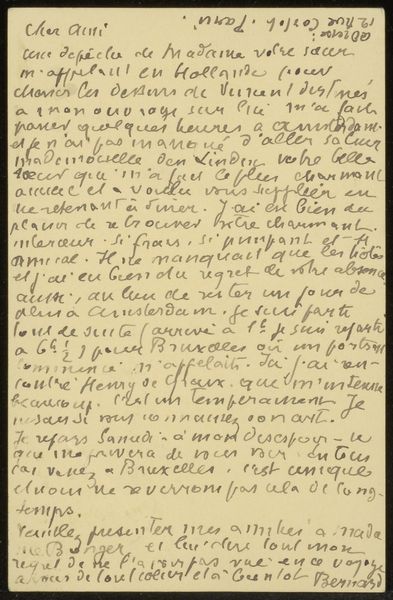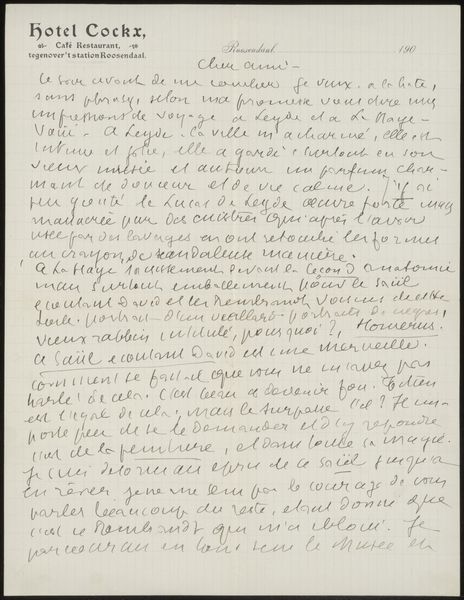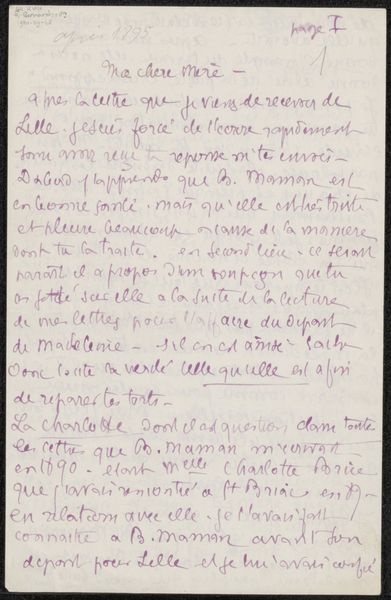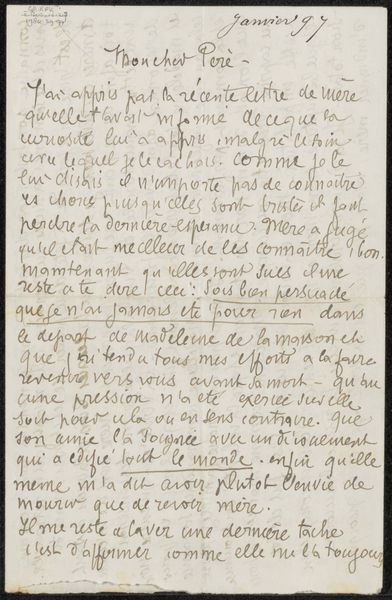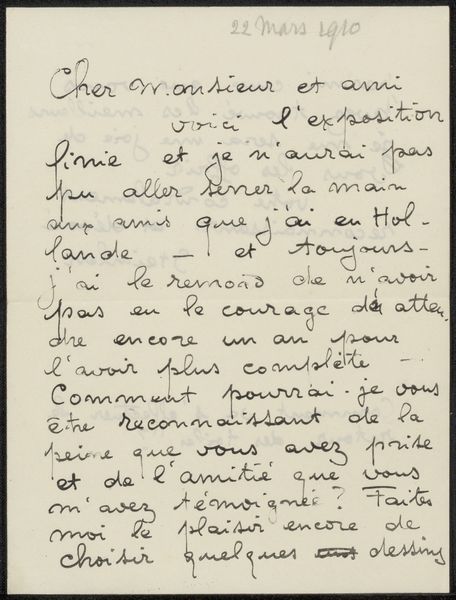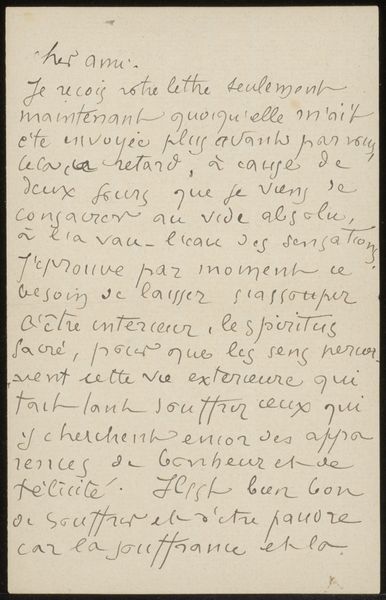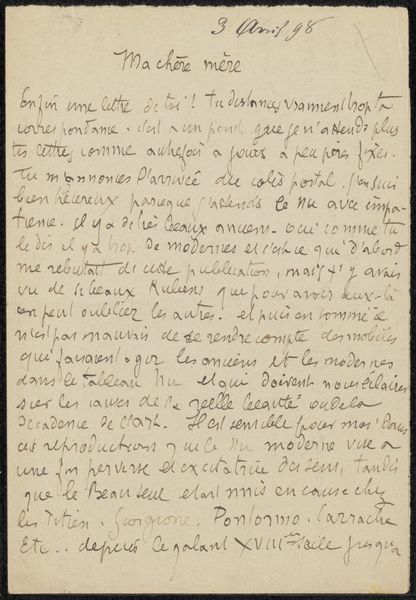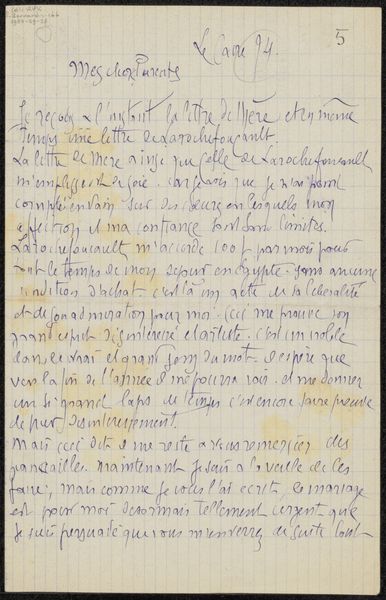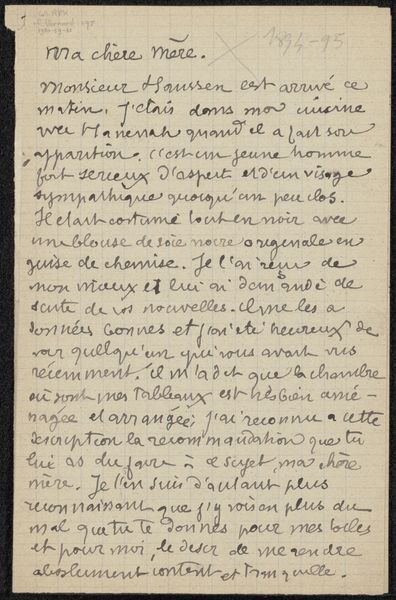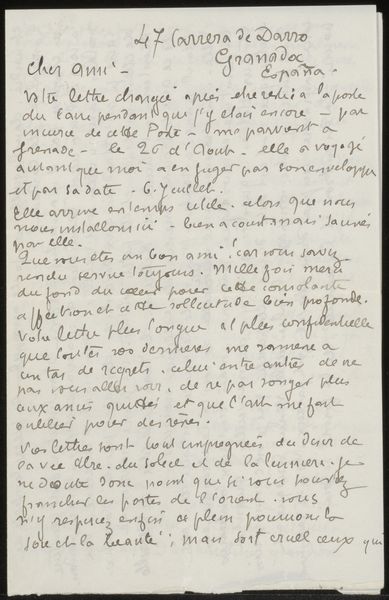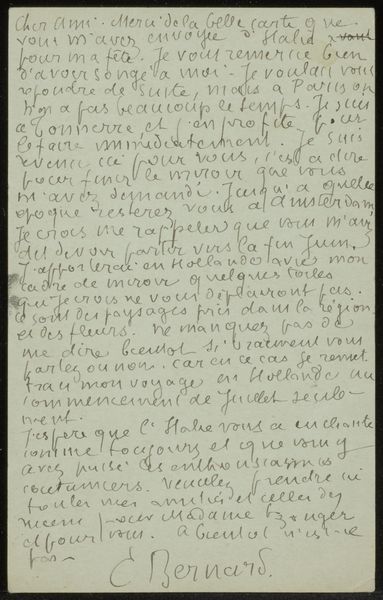
drawing, paper, ink, pen
#
drawing
#
paper
#
ink
#
intimism
#
pen
#
calligraphy
Copyright: Rijks Museum: Open Domain
Curator: This is a letter by Emile Bernard entitled "Brief aan Héloïse Bernard-Bodin," dating between 1878 and 1941. It's executed with pen and ink on paper. Looking at this makes you wonder, who was Héloïse? Editor: Intimacy is what I first feel. It seems a bit…secret. You see the words carefully placed and filling up every bit of paper. Almost like whispers, confined on this page. Curator: Bernard's involvement with intimism here is particularly poignant. As someone whose work challenged public norms, the choice to render something so personal as a letter—with a name of a possibly close female recipient in the title, is almost subversive, would you not say? Editor: It speaks of that duality within artists. Creating revolutions in public while also nurturing close relationships with an enclosed community. What do you think it means that a good portion of this letter seems illegible and almost impossible to decipher without a powerful OCR engine, by a human being? Curator: The difficulty in deciphering highlights the delicate relationship between accessibility and ownership, where even the text betrays its writer. Editor: So well put. Curator: Think about the act of letter-writing then as a way to circumvent some larger art establishment and the very constraints of a highly developed art marketplace; Bernard here creates his own art world, almost. He turns language, as you aptly pointed out, into an art object. It certainly reminds me a bit of artists’ book making—artists thinking beyond a square, a medium or traditional ways of marketing and creating narratives of their life or of a loved one. Editor: Indeed. I also see the ways these constraints shaped the language used; Bernard had to consider every mark as potentially holding not just information, but artistic meaning, making writing and artwork become more entwined in turn. It begs to be seen and read simultaneously, complicating our understanding. Curator: Absolutely, these nuances of language are like silent arguments embedded in a tangible medium—much unlike the grandiose displays of, say, salons—and are incredibly affecting, offering both artistic and historical context. Editor: Precisely. Looking closer, there's something rather beautiful in these deliberate intentions that is captured beyond the pure meaning of the language here. It's touching and rather exciting to witness as someone on the receiving end. Thank you for drawing my attention to it.
Comments
No comments
Be the first to comment and join the conversation on the ultimate creative platform.

